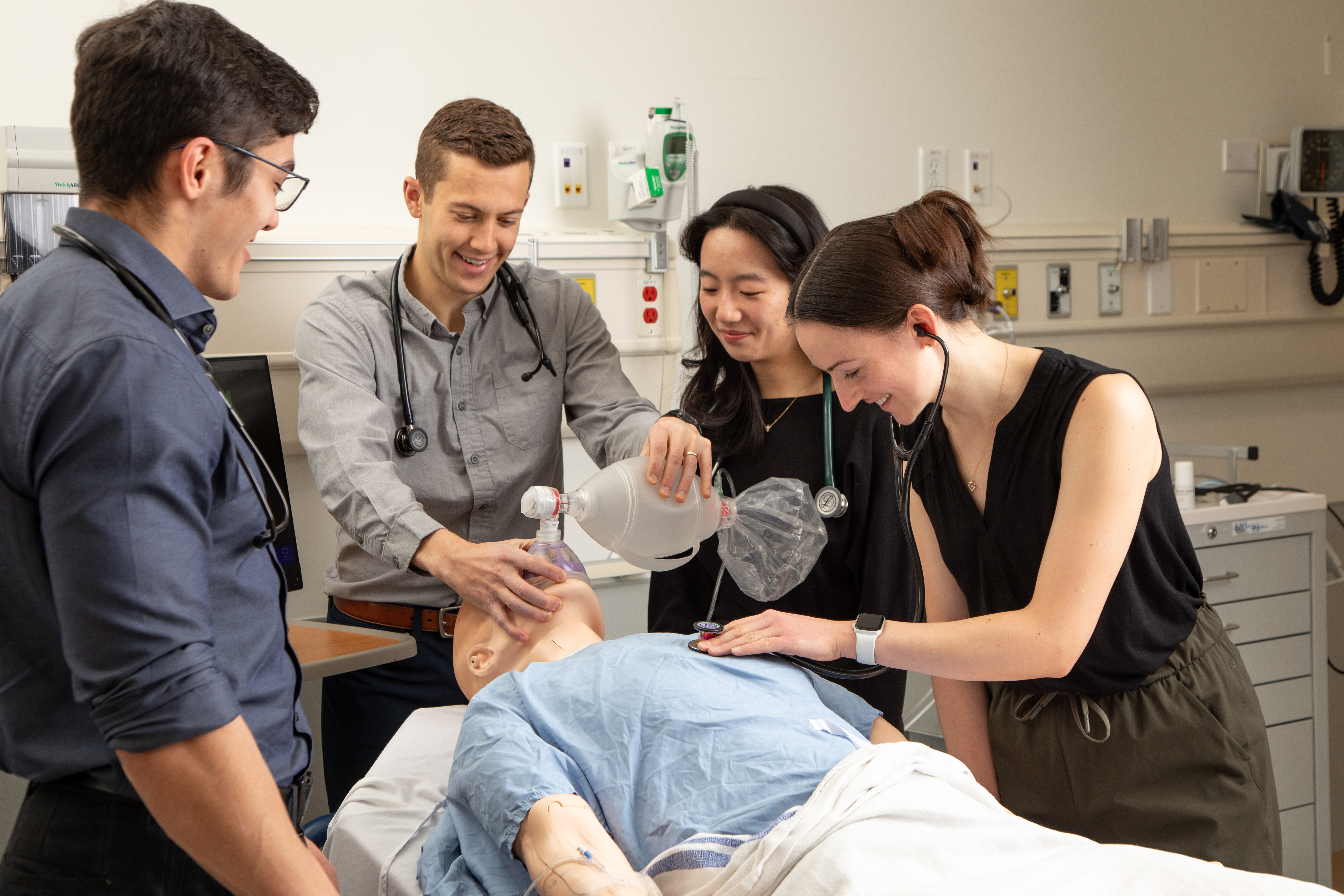HSERC advances health sciences education with top-tier simulations and faculty collaboration
Jennifer Fitzgerald - 4 September 2024

At the College of Health Sciences, HSERC spaces are not your typical classrooms; they are high-tech environments equipped with the latest medical simulation technology. Here, students from nursing, medicine, pharmacy and other faculties come together, learning through realistic scenarios that prepare them for the unpredictability of real-world health-care settings.
Dan Moser, the administrative coordinator at HSERC, has a unique connection to the centre. "I initially joined HSERC through the standardized patient program, where I spent several years. I then moved into a contract trainer role before entering my current position," Moser explains. This progression has afforded him an extensive, hands-on understanding of the centre’s operations and its pivotal role in advancing health sciences education.
The standardized patient program at HSERC is crucial in creating realistic training scenarios for students. "The program allows students to interact with individuals trained to portray specific medical conditions or scenarios," Moser says. "This interaction is more authentic than practicing with peers, as standardized patients are unknown to the students and are trained to exhibit particular symptoms and behaviours."
HSERC's mission is multifunctional, focusing on providing extensive simulation environments that enhance the educational experience for health science students. "We have a three-pronged approach," Moser explains. "Firstly, we supply standardized patients to both internal and external clients. This includes faculties within the university as well as external organizations. Secondly, we facilitate high-stakes licensing exams. Lastly, we offer extensive simulation spaces that mimic real-world clinical environments for teaching purposes."
Interprofessional education is a cornerstone of HSERC’s offerings. "HSERC is essentially the hub where the interprofessional education launch takes place annually," Moser notes. "Our spaces are utilized for these events, which bring together students from various health disciplines to engage in collaborative simulations and training. This approach is critical in preparing students for real-world scenarios where they must work cohesively with professionals from different fields."
One of the standout aspects of HSERC is its diverse and realistic simulation spaces. "We provide a variety of settings, including 24 clinical exam rooms, an emergency room simulation space and a bariatric patient simulation area. Additionally, we have a ‘smart condo’ designed to replicate in-home care scenarios," Moser explains. "These spaces are designed to closely mirror actual clinical environments, providing students with invaluable hands-on experience, so they’re not experiencing scenarios for the first time when they're out in the field."
Collaboration is key to HSERC’s success. "We work closely with various faculties at the U of A, offering our simulation spaces free of charge for educational purposes," Moser shares. "This open access encourages a wide range of simulation activities and fosters collaboration among different departments."
Students have ample opportunities to engage with HSERC beyond their curriculum. "Students can join the standardized patient program, providing them with a unique perspective on patient care and medical simulations," Moser mentions. "This experience is invaluable in understanding the patient’s viewpoint and improving their communication and clinical skills."
One of their recent successes was the interprofessional education launch event in September 2023. “This was a significant all-day event. We saw a large turnout of students who engaged in collaborative simulations that covered a wide range of topics. The event was a success, with everyone gaining valuable insights and experiences from it.
“There was extensive planning involved,” adds Moser. “A dedicated committee meticulously organized every aspect of the event, from inception to execution. This involved significant collaboration between our team and other faculties.”
HSERC has also made significant strides in streamlining its booking system. "We've refined our booking processes to make it easier for our clients," Moser explained. "Our new system, which includes a simple Google form, ensures that everything is tracked efficiently, making it straightforward for faculties to book our spaces."
“Booking with us can vary depending on the time of year, but we generally accept reservations up to a year in advance,” he says. “While we strive to be flexible with our space bookings to accommodate requests quickly, availability is key. If we have the space, we can get you in there promptly.”
Looking ahead, Moser hopes to refine HSERC services and continue enhancing its offerings. "Our goal is to ensure we provide exceptional service to our clients and maintain a space filled with diverse simulation activities."